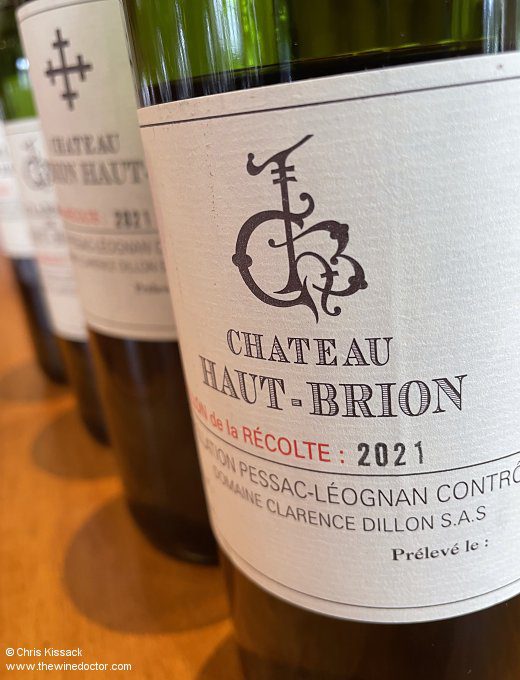Château Haut-Brion: Tasting & Drinking
It probably will come as no surprise if I reveal a personal adoration of the wines of Château Haut-Brion. In this, of course, I am hardly alone; while it may be less highly rated than its first-growth counterparts on the Médoc, a position which does seem to peter down to have some influence on the wine’s pricing, on the whole critics are fairly united in their praise for Château Haut-Brion.
It seems de rigueur in any particular vintage to debate the performance of Château Haut-Brion vis-à-vis that of its peer, Château La Mission Haut-Brion, a question to which there is rarely one simple answer. Some will come down in favour of one and some the other, depending on the vintage naturally. This can be witnessed in the annual primeur tasting of the wines, which is usually offered to the press in the elegantly ecclesiastical tasting room at Château La Mission Haut-Brion when both wines are poured side by side, not to mention the two second wines, the three corresponding white wines and for a while the wines of Château Quintus as well (which made for a nine-wine line-up – but these days I taste Château Quintus at the property). It is only natural for tasters to rate one against the other, to pass judgement on which wine they feel has fared best in that particular year. I often find myself coming down in favour of Château Haut-Brion, as I did in 2008, a monumental wine that was undoubtedly one of the top wines of the entire vintage. In other vintages, however, I may find myself coming down in favour of Château La Mission Haut-Brion.
What is it that makes the wines of Château Haut-Brion so distinctive and, dare I say it, superior? In terms of flavour it is that paradoxical combination of savoury, umami-rich tones and the elegant, floral perfume of rose petals and peonies. In terms of structure it is the light-footed concentration, the wines having depth and substance but not without the desperate extraction demonstrated by some of Bordeaux’s first-growth wanna-bes, without the sweet slick of creamy fruit that so many modern wines in this region display. These are structured wines that have a good balance of acidity and tannin along with that concentration, and of course they have monumental length. And although I don’t have great familiarity with the wines from the time of George Delmas, I have tasted a good number of vintages made under the direction of Jean-Bernard and more recently by Jean-Philippe, and it seems to me that the quality has been not only maintained, but with the assistance of some benevolent vintages such as 2009 and 2010, or maybe 2016 and 2019. and perhaps some new technologies introduced along theway, these wines seem better than ever.

